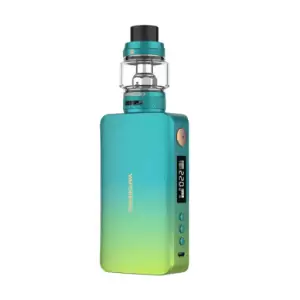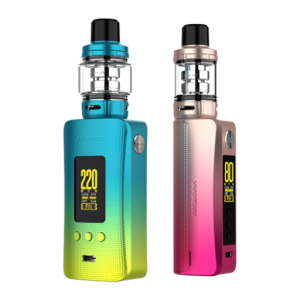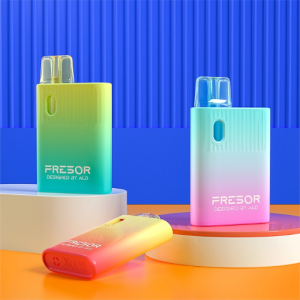Introduction: Understanding the Global Vaping Landscape
Vaping has become a ubiquitous phenomenon worldwide, with Disposable Vapes emerging as a significant player in this evolving market. The surge in popularity of vaping can be attributed to several factors, including its perceived harm reduction potential compared to traditional smoking, the variety of flavors available, and the convenience of use. As we delve into the intricacies of the global vaping landscape, it becomes apparent that understanding the regulatory frameworks governing disposable vapes is paramount.
In recent years, policymakers and public health authorities have grappled with the challenge of regulating Disposable Vapes to mitigate potential health risks, particularly among youth populations. While some countries have embraced vaping as a harm reduction tool, others have implemented strict regulations to curb its use, citing concerns about nicotine addiction and long-term health effects.
Despite the diverse approaches to vaping regulation, there is a growing consensus on the need for evidence-based policies that strike a balance between public health objectives and the rights of adult consumers. As we navigate through this complex terrain, it is essential to analyze the nuances of vaping regulations across different regions and explore the implications for public health, industry innovation, and consumer rights. Through collaboration and dialogue, we can pave the way for a safer and more sustainable vaping landscape globally.
Components and Functionality of Disposable Vapes
Understanding the intricacies of Disposable Vapes entails a closer examination of their components and functionality. These devices are designed to offer a convenient and user-friendly alternative to traditional smoking, but their effectiveness and safety hinge on several key elements.
The primary components of Disposable Vapes include the battery, atomizer, and e-liquid reservoir. The battery serves as the power source, typically a small lithium-ion battery that activates the heating element when engaged. The atomizer, often referred to as the coil, is responsible for heating the e-liquid to the point of vaporization. This process converts the liquid nicotine solution into inhalable vapor, mimicking the sensation of smoking without the combustion of tobacco.
The e-liquid reservoir, sometimes called the cartridge or pod, contains the flavored nicotine solution. These solutions come in a variety of flavors, ranging from traditional tobacco and menthol to fruit and dessert-inspired options. The reservoir also plays a crucial role in determining the nicotine strength of the vapor produced, offering users the flexibility to choose their preferred nicotine dosage.
Functionally, Disposable Vapes operate on a simple draw-activated mechanism, meaning users simply inhale from the mouthpiece to activate the device. This streamlined approach eliminates the need for complex settings or button activation, making disposable vapes accessible to both novice and experienced vapers alike.
The disposable nature of these devices adds another layer of convenience, as users can discard them once the e-liquid is depleted or the battery is exhausted. This eliminates the hassle of refilling e-liquid or replacing coils, making disposable vapes an attractive option for on-the-go vaping.
In essence, Disposable Vapes offer a straightforward and hassle-free vaping experience, powered by a combination of innovative design and user-friendly functionality. By understanding the components and functionality of these devices, users can make informed decisions about their vaping habits while policymakers can develop evidence-based regulations to ensure the safety and well-being of consumers.

North America: Vaping Regulations in the United States and Canada
North America represents a diverse landscape of vaping regulations, with the United States and Canada adopting distinct approaches to govern Disposable Vapes and other vaping products.
In the United States, vaping regulations are a patchwork of federal and state-level measures, creating a complex regulatory environment. The Food and Drug Administration (FDA) has regulatory authority over tobacco products, including e-cigarettes, under the Family Smoking Prevention and Tobacco Control Act. However, the regulatory landscape has been marked by ongoing debates and legal challenges, leading to delays in the implementation of certain provisions.
At the federal level, the FDA has introduced various regulations aimed at curbing youth vaping, such as restricting the sale of flavored e-cigarettes in certain retail outlets and implementing age verification requirements for online sales. Additionally, the FDA has mandated that manufacturers of Disposable Vapes and other e-cigarette products submit premarket tobacco product applications (PMTAs) to remain on the market, a process intended to assess their public health impact.
In Canada, vaping regulations fall under the purview of the Tobacco and Vaping Products Act, which seeks to balance the promotion of public health with the interests of adult smokers seeking alternatives to combustible tobacco. The Act prohibits the sale of vaping products to individuals under the age of 18 or 19, depending on the province or territory. It also imposes restrictions on advertising and promotion to prevent youth uptake of vaping.
Both countries have grappled with concerns about youth vaping and the potential health risks associated with nicotine addiction. In response, policymakers have implemented various measures to restrict access to Disposable Vapes and other vaping products among underage populations while promoting awareness of the potential risks among consumers.
Despite these efforts, challenges remain in enforcing vaping regulations effectively, particularly in the online marketplace and among non-traditional retailers. As such, ongoing monitoring and evaluation of regulatory frameworks are essential to address emerging issues and safeguard public health in North America.
Europe: The Impact of the Tobacco Products Directive (TPD) on Disposable Vapes
Europe has seen a significant impact on the regulation of Disposable Vapes due to the implementation of the Tobacco Products Directive (TPD). Enacted by the European Union (EU), the TPD aims to harmonize regulations concerning tobacco and related products across member states while safeguarding public health.
Under the TPD, Disposable Vapes are classified as tobacco-related products, subjecting them to stringent regulations concerning their manufacture, sale, and marketing. These regulations include restrictions on nicotine concentration, e-liquid ingredients, packaging, and labeling requirements. Additionally, the TPD imposes limits on the size of e-liquid cartridges and tanks to prevent excessive nicotine intake and promote consumer safety.
The implementation of the TPD has led to a standardized approach to vaping regulation across EU member states, ensuring a consistent level of protection for consumers and reducing regulatory disparities between countries. However, interpretations and enforcement of the directive may vary among member states, leading to some degree of flexibility in how regulations are applied.
One of the key objectives of the TPD is to prevent youth initiation of vaping while providing adult smokers with access to potentially less harmful alternatives. As such, the directive includes measures to restrict advertising and promotion of Disposable Vapes and other vaping products, particularly towards young people. This includes bans on certain types of advertising, sponsorship, and promotional activities, as well as mandatory health warnings on packaging.
Despite the TPD’s comprehensive approach to vaping regulation, challenges persist in addressing emerging trends such as cross-border sales and online marketing. Policymakers continue to monitor the evolving vaping landscape and explore additional measures to protect public health while fostering innovation in the vaping industry.
In summary, the Tobacco Products Directive has had a profound impact on the regulation of Disposable Vapes in Europe, shaping the industry’s trajectory and promoting public health objectives across EU member states. By harmonizing regulations and promoting responsible marketing practices, the TPD seeks to strike a balance between consumer choice and public health priorities in the realm of vaping.
Asia-Pacific: Vaping Policies in a Region of Contrasts
The Asia-Pacific region presents a diverse landscape of vaping policies, characterized by significant variations in attitudes and regulations toward Disposable Vapes and other vaping products. From countries with strict bans to those with more permissive regulations, navigating the complex regulatory terrain in this region requires an understanding of cultural, economic, and public health factors.
In some countries, such as Japan and South Korea, vaping is relatively more accepted as a harm reduction tool compared to traditional smoking. However, even in these nations, regulations exist to control the sale and marketing of vaping products, particularly to minors. Despite the permissive stance, policymakers remain vigilant in monitoring vaping trends and potential health impacts.
Conversely, countries like India and Australia have implemented stringent restrictions on Disposable Vapes and e-cigarettes, citing concerns about nicotine addiction and the lack of long-term research on their health effects. India, for example, imposed a nationwide ban on the sale and production of e-cigarettes in 2019, citing the need to protect youth from the dangers of nicotine addiction.
China, the world’s largest producer of vaping products, occupies a unique position in the Asia-Pacific region. While manufacturing and export of vaping devices are permitted, domestic sales and marketing face significant regulatory hurdles. The Chinese government has expressed concerns about youth vaping and is considering stricter regulations to address these issues.
The Asia-Pacific region also grapples with the challenge of regulating vaping in the context of emerging markets and evolving consumer preferences. Some countries, such as Thailand and Singapore, have imposed outright bans on vaping, while others, like Malaysia and the Philippines, have opted for more nuanced approaches, allowing regulated sales with age restrictions and public health warnings.
Cultural attitudes toward smoking and nicotine consumption play a significant role in shaping vaping policies in the Asia-Pacific region. In countries where smoking is deeply ingrained in cultural practices, policymakers face additional challenges in promoting tobacco harm reduction strategies and combating the stigma associated with vaping.
Overall, the Asia-Pacific region presents a diverse array of vaping policies, reflecting the complexities of balancing public health objectives with economic interests and cultural norms. As vaping continues to evolve, policymakers must remain adaptive and evidence-based in their approach to regulation, ensuring that the interests of both consumers and public health are safeguarded.
Middle East and Africa: Navigating Through Complex Vaping Laws
The Middle East and Africa present a unique landscape of vaping regulations, shaped by a combination of cultural perceptions, public health priorities, and economic considerations. In this diverse region, Disposable Vapes encounter a complex web of laws and attitudes that vary significantly from country to country.
In some Middle Eastern countries, such as the United Arab Emirates and Saudi Arabia, vaping is subject to strict regulations, with bans on the sale and importation of vaping products. These regulations often stem from cultural and religious values that discourage substance use and prioritize public health concerns. However, enforcement of these regulations may vary, with some countries experiencing challenges in curbing the proliferation of illicit vaping products.
Conversely, other Middle Eastern nations, such as Lebanon and Jordan, have adopted more permissive attitudes toward vaping, allowing the sale and consumption of Disposable Vapes with varying degrees of regulation. In these countries, vaping is often viewed as a less harmful alternative to smoking, particularly among young people looking to quit or reduce their tobacco consumption.
In Africa, the regulatory landscape surrounding Disposable Vapes is equally diverse, reflecting a range of socioeconomic and public health challenges. Some countries, such as South Africa and Nigeria, have introduced regulations to control the sale and distribution of vaping products, while others have yet to develop comprehensive policies due to competing priorities and limited resources.
Cultural perceptions of smoking and nicotine consumption also influence vaping regulations in the Middle East and Africa. In regions where smoking is socially accepted or even encouraged, policymakers may face resistance to implementing strict vaping regulations, while in more conservative societies, there may be greater support for measures to restrict vaping.
Overall, navigating through the complex vaping laws in the Middle East and Africa requires a nuanced understanding of local customs, regulatory frameworks, and public health priorities. As vaping continues to gain popularity in the region, policymakers must strike a balance between promoting harm reduction strategies and addressing potential health risks, all while respecting cultural sensitivities and fostering international cooperation.
Latin America: Emerging Trends and Regulatory Frameworks
Latin America is experiencing a dynamic shift in vaping regulations, marked by emerging trends and evolving regulatory frameworks. As Disposable Vapes gain traction in the region, policymakers are grappling with the challenge of balancing public health objectives with industry innovation and consumer demand.
In recent years, Latin American countries have adopted a range of approaches to regulate Disposable Vapes and other vaping products. Some countries, such as Brazil and Mexico, have implemented strict regulations, including bans on the sale of vaping products and restrictions on advertising and promotion. These measures are often driven by concerns about youth initiation and the potential health risks associated with nicotine addiction.
Conversely, other Latin American nations, such as Argentina and Chile, have taken a more permissive stance toward vaping, allowing the sale and consumption of Disposable Vapes with varying degrees of regulation. These countries view vaping as a harm reduction tool and have prioritized education and awareness campaigns to inform consumers about the relative risks of vaping compared to smoking.
Emerging trends in Latin America also include the rise of alternative nicotine delivery systems, such as heated tobacco products and nicotine pouches. These products offer consumers additional choices beyond traditional combustible cigarettes and Disposable Vapes, prompting policymakers to reassess existing regulations and adapt to changing market dynamics.
Public health initiatives play a crucial role in shaping vaping policies in Latin America, with governments collaborating with international organizations and civil society groups to promote evidence-based approaches to tobacco control. However, challenges remain in enforcing regulations and monitoring compliance, particularly in the context of cross-border sales and online marketing.
Looking ahead, Latin America is poised to play a pivotal role in shaping the future of vaping regulations on the global stage. By embracing innovation, fostering dialogue between stakeholders, and prioritizing public health, policymakers can create a regulatory framework that balances the interests of consumers, industry, and public health objectives in the realm of Disposable Vapes and other vaping products.

The Future of Vaping Regulations: Predictions and Challenges
As the vaping industry continues to evolve, the future of vaping regulations is fraught with both predictions and challenges. From technological advancements to public health concerns, several factors will shape the regulatory landscape for Disposable Vapes and other vaping products on a global scale.
One of the key predictions is the continued convergence of vaping regulations towards a more standardized approach. As awareness of vaping-related issues grows and evidence of its impact on public health accumulates, policymakers are likely to prioritize harmonizing regulations to ensure consistency and coherence across different jurisdictions. This trend may involve closer collaboration between countries, international organizations, and industry stakeholders to develop common standards and best practices.
Technological advancements in vaping devices may also influence future regulations. Innovations such as temperature control, nicotine delivery systems, and product design features pose new challenges for regulators in assessing their safety and potential risks. Policymakers will need to stay abreast of these developments and adapt regulatory frameworks accordingly to address emerging concerns and ensure consumer safety.
Public health considerations will remain at the forefront of vaping regulations, with policymakers striving to strike a balance between harm reduction and prevention. While vaping has the potential to reduce harm for adult smokers seeking alternatives to combustible tobacco, concerns about youth initiation and the long-term health effects of vaping continue to shape regulatory agendas. Future regulations may focus on restricting access to Disposable Vapes and other vaping products among underage populations, implementing measures to prevent marketing to youth, and promoting cessation support for adult smokers.
Challenges abound in creating a cohesive regulatory framework for Disposable Vapes on a global scale. Divergent cultural norms, economic interests, and political dynamics can complicate efforts to harmonize regulations and enforce compliance. Moreover, the rapid pace of innovation in the vaping industry means that regulations must remain flexible and adaptive to address emerging trends and technologies effectively.
In conclusion, the future of vaping regulations will be shaped by a complex interplay of technological, public health, and regulatory factors. By staying informed, collaborating across borders, and prioritizing evidence-based policymaking, regulators can navigate these challenges and create a regulatory framework that promotes public health, protects consumers, and fosters innovation in the vaping industry.
FAQs: Common Questions About Disposable Vapes
What distinguishes disposable vapes from other vaping devices?
Disposable vapes are single-use devices that come pre-filled with e-liquid and are designed to be discarded once the e-liquid is depleted or the battery dies. Unlike refillable vaping devices, disposable vapes do not require maintenance or refilling, making them convenient and hassle-free options for users.
Are there any health risks associated with using disposable vapes?
While vaping is generally considered less harmful than smoking traditional cigarettes, there are still potential health risks associated with the use of disposable vapes. These risks primarily stem from the inhalation of aerosolized e-liquid, which may contain nicotine, flavorings, and other chemicals. Long-term studies are still ongoing to fully understand the health effects of vaping, but some potential risks include respiratory issues, nicotine addiction, and cardiovascular problems.
How do regulatory frameworks differ between countries?
Regulatory frameworks for disposable vapes vary widely between countries, with some adopting more stringent regulations than others. Factors influencing regulations include public health concerns, cultural attitudes towards vaping, and economic interests. Some countries have implemented bans or restrictions on the sale and marketing of disposable vapes to address youth vaping, while others have opted for more permissive approaches with age restrictions and consumer education initiatives.
What steps can policymakers take to address underage vaping?
Policymakers can take several steps to address underage vaping, including implementing age restrictions on the sale of disposable vapes, restricting marketing and advertising that targets youth, and increasing enforcement of existing regulations. Additionally, public health campaigns and school-based education programs can help raise awareness about the risks of vaping and discourage underage use.
How do cultural attitudes influence vaping regulations worldwide?
Cultural attitudes towards smoking and nicotine consumption vary widely between countries and regions, influencing the development and implementation of vaping regulations. In some cultures, smoking is socially accepted or even encouraged, leading to more permissive vaping regulations. In contrast, in cultures where smoking is stigmatized or frowned upon, policymakers may adopt stricter regulations to discourage vaping and protect public health.






